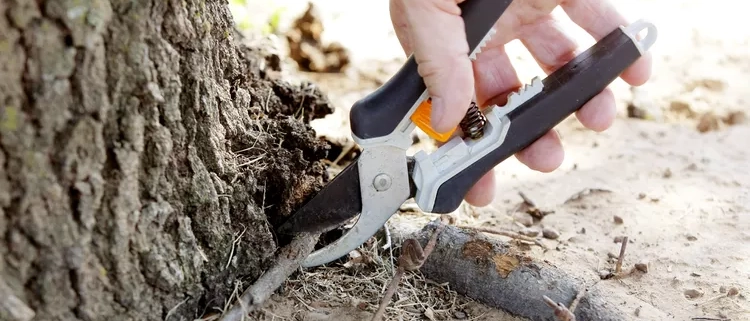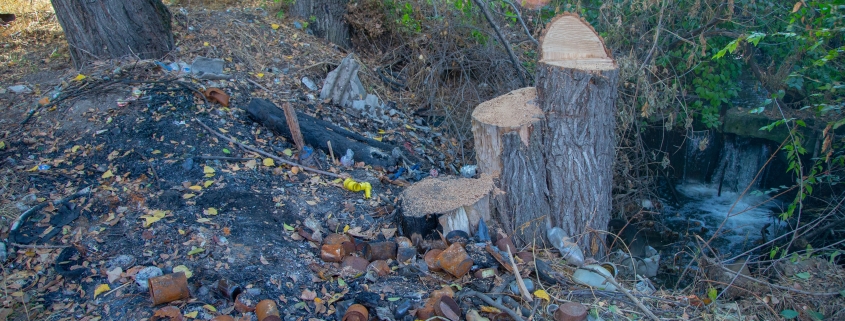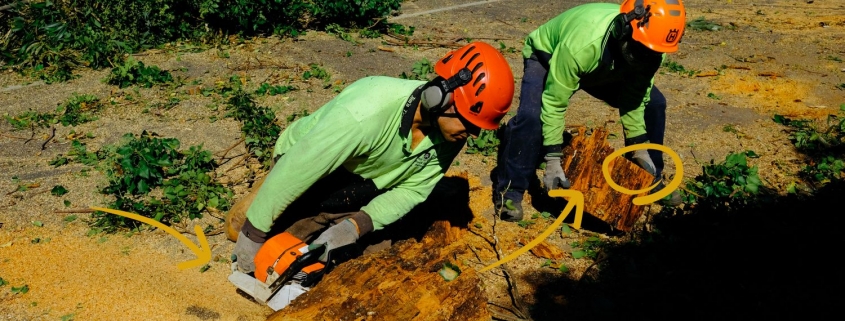When it comes to addressing tree health concerns, safety hazards, or land development needs, the assistance of tree removal professionals becomes invaluable. These experts in the cutting of trees, also known as tree removal specialists, offer tree cutting services that ensure the safe and efficient removal of trees, including tree felling, tree lopping, stump removal, and more. However, the effects of tree cutting extend beyond just the removal process itself. It is crucial to understand what happens to the ground when a tree is removed and the importance of seeking expert guidance in post-removal soil management.
In this article, we will explore the expertise and insights provided by tree removal professionals, shedding light on the consequences of removing trees on the ground. Whether you are a homeowner, a land developer, or simply curious about the topic, this guide will provide you with essential information to make informed decisions and understand the intricacies of tree cutting and its impact on the ground.
Effects of Tree Removal Services on the Ground
Soil Disruption
The process of removing trees can have notable effects on the ground, particularly regarding soil disruption. When heavy machinery and equipment are utilized, they can exert pressure on the soil, leading to compaction and disturbance of its natural structure. Soil compaction occurs when the weight of the equipment compresses the soil particles, reducing pore space and limiting the soil’s ability to retain water, absorb nutrients, and facilitate root growth.
Tree cutting professionals possess the expertise to minimize soil disturbance and compaction. They carefully select suitable equipment, use proper handling practices, and distribute weight evenly to reduce the impact on the soil.
Root Decomposition
The tree root removal service not only affects the above-ground portion but also has implications for the roots below the surface. Once a tree is removed, the natural decomposition process begins at its roots. Over time, the roots will decay and break down, potentially leaving voids or empty spaces in the soil. These voids can weaken the stability of the ground, leading to potential hazards such as sinkholes or uneven terrain.
Specialized tree cutting services often incorporate root removal to mitigate the impacts of root decomposition. By effectively managing root decomposition and filling in gaps, experts in tree removal preserve the integrity of the ground and reduce potential safety hazards.
Soil Erosion
Tree removal services can have significant impacts on the ground, including an increased risk of soil erosion. Tree roots play a vital role in stabilizing the soil, as they penetrate deep into the ground, anchoring it and preventing erosion. When trees are removed, the absence of these root systems leaves the soil more vulnerable to erosion caused by wind and rainfall.
Tree removal experts may recommend soil stabilization techniques to safeguard the ground from erosion. These techniques can include implementing erosion control blankets or mats, terracing the land to reduce slope gradient, installing retaining walls, or introducing vegetation that helps bind the soil together.
Nutrient Depletion
Trees play a vital role in cycling and replenishing nutrients within the ecosystem. When trees are removed, the organic matter that would naturally decompose and release nutrients back into the soil is diminished. Additionally, the extensive root systems of trees help to extract and absorb nutrients from the soil, contributing to its fertility. Thus, the absence of trees can lead to a decline in nutrient availability in the soil.
To address this issue, tree removal specialists may recommend soil amendments or fertilization techniques to replenish organic matter and essential nutrients. Soil amendments such as compost or organic matter can be added to improve the soil’s nutrient content and structure. Fertilization techniques may involve applying specific nutrients based on soil testing results to ensure the ground has an adequate supply of essential elements for plant growth.
Sunlight Exposure
The removal of a tree exposes the ground to increased sunlight, which can have various effects on the ecosystem. Tree removal professionals understand the importance of managing these changes and can provide guidance on mitigating their impact. Increased sunlight exposure can lead to elevated soil temperatures and increased evaporation, affecting nutrient cycling, microbial activity, and water availability for plants.
To address these issues, professionals may suggest shading methods to regulate sunlight intensity and create a more suitable microclimate for the ground. By managing the changes in sunlight exposure, tree removal experts help maintain a balanced environment for plant growth, soil health, and overall ecosystem stability.
Weed Invasion
The removal of trees can create open spaces that are susceptible to weed invasion. When trees are present, their dense canopies often shade the ground, limiting the amount of sunlight that reaches the soil. However, after the removal of trees, these open areas receive increased sunlight, providing ideal conditions for weed growth. Weeds are opportunistic plants that quickly take advantage of available resources and can outcompete native vegetation, leading to the colonization of invasive species.
To combat weed invasion and preserve the integrity of the ground, experts in tree removal can provide valuable advice on effective weed management strategies. They may recommend the use of mulch, which acts as a protective barrier on the soil surface, preventing weed seeds from germinating and suppressing weed growth. Mulching also helps conserve soil moisture, regulate soil temperature, and improve soil structure.
Soil Microbial Activity
The presence of trees fosters a rich and diverse community of soil microbes. Tree roots provide a source of organic matter, exudates, and nutrients that support the growth and activity of beneficial soil microorganisms. However, when trees are removed, the absence of their roots can disrupt the delicate balance of the soil’s microbial ecosystem. This disruption can have repercussions on essential soil processes such as nutrient cycling, organic matter decomposition, and soil structure maintenance.
One approach that tree removal specialists may suggest is composting. Composting involves the decomposition of organic materials such as leaves, branches, and other plant matter. The resulting compost can be added back to the soil, reintroducing organic matter and nutrients while also promoting the growth of beneficial soil microbes.
Changes in Soil pH
Different tree species have varying effects on soil acidity or alkalinity, depending on their nutrient uptake and root exudates. When trees are removed, the absence of their roots can cause a shift in soil pH, potentially altering the suitability of the ground for certain plants. This change in pH can affect nutrient availability, microbial activity, and overall soil health.
To address the effects of tree cutting on soil pH, tree removal experts can provide valuable advice. They may recommend soil testing to assess the current pH levels and determine the necessary adjustments. Based on the results, experts can suggest pH adjustment methods, such as adding lime to raise soil pH or incorporating elemental sulfur to lower it.
Soil Compaction
Soil compaction is a common issue that can occur during the cutting of trees due to the heavy equipment used in the process. It refers to the compression of soil particles, resulting in reduced pore space and increased soil density. This compaction can negatively impact the soil’s ability to function optimally, affecting its water-holding capacity, nutrient availability, and root penetration.
Proper techniques employed by tree removal professionals can help minimize compaction and preserve the soil’s ability to retain water, and allow for adequate airflow and careful equipment handling.
Regeneration Potential
After the removal of trees, the ground has the potential to undergo a process of regeneration and restoration. Natural regeneration occurs when native vegetation and plant species reestablish themselves in the area, utilizing seeds that were present in the soil or dispersed by nearby plants. This process relies on factors such as sunlight availability, soil conditions, and the presence of viable seeds or dormant plant parts.
Tree removal specialists understand the dynamics of natural regeneration and can offer valuable insights on the potential vegetation choices that are suitable for the specific site conditions. They consider factors such as soil type, moisture levels, sunlight exposure, and the presence of surrounding vegetation to guide the selection of appropriate plant species for optimal regeneration.
Proficient individuals who specialize in the removal of trees, such as Jim’s Trees, provide indispensable tree cutting services. Their expertise encompasses various aspects, including the removal of tree roots and branches, tree lopping, stump removal and more, contributing to the secure and efficient removal of trees while minimizing any adverse effects on the surrounding ground. It is crucial to possess a comprehensive understanding of how tree cutting impacts the soil to implement suitable soil management practices after the removal procedure. Partnering with experienced tree removal experts enables you to effectively tackle potential issues and safeguard the overall health and integrity of the ground.





















